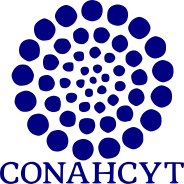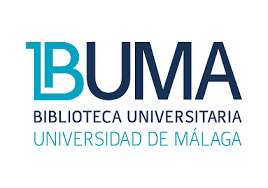Diversidad y estructura arbórea, indicadores de salud aplicados a un Bosque Urbano de la Ciudad de México
DOI:
https://doi.org/10.18387/polibotanica.47.3Palabras clave:
bosque urbano, salud forestal, índices de diversidadResumen
El arbolado urbano es un elemento esencial en la infraestructura de toda urbe. El Bosque San Juan de Aragón (BSJA) en la Ciudad de México está catalogado como un área verde de valor ambiental pero su condición de diversidad arbórea como indicador de salud se desconoce. Los objetivos del estudio fueron adaptar los procedimientos del Indicador de Salud Forestal Diversidad y Estructura (IDE) y generar un diagnóstico sobre el estado actual del BSJA. Dentro del bosque se ubicaron al azar 28 sitios circulares de 0.1 ha, en cada sitio se determinó por árbol: su clasificación taxonómica, el diámetro normal (Dap), la altura total (At), la proporción de copa viva y la densidad de copa. Se calcularon el área basal (Aba), volumen compuesto y área superficial de copa y los índices de diversidad de Shannon-Wiener, Simpson, Berger-Parker y de similitud de Jaccard; además, de un Índice de Valor de Importancia Urbano (IVIU). En total se evaluaron 760 árboles de 10 familias, 11 géneros y 12 especies. Las familias Casuarinaceae, Proteaceae, Myrtaceae y Cupressaceae representaron el 69% de la densidad. El Dap promedio fue de 17,5 cm, la At de 8,6 m y el Aba de 0,40 m2/ha. El valor máximo para el índice de Shannon, Simpson y Berger-Parker fue de 1,88, 0,84 y 0,76, respectivamente. El índice de Jaccard presentó un rango de 22 a 87% entre secciones del bosque. Casuarina equisetifolia y Eucalyptus camaldulensis presentaron los IVIU más altos con 28,19% y 18,02%, respectivamente. La diversidad arbórea es baja, similar a otras áreas verdes del mundo. El IVIU identifica a las especies con el mayor potencial para proveer servicios ecosistémicos por su alto porcentaje de biomasa y cobertura. Los procedimientos del IDE fueron fácilmente adaptados y aplicados al arbolado del BSJA.
Referencias
Alvey, A. A. (2006). Promoting and preserving biodiversity in the urban forest. Urban Forestry and Urban Greening, 5(4), 195–201. https://doi.org/10.1016/j.ufug.2006.09.003
Amacher, M. C. ; O. ’, Neill, K. P., Conkling, B., Professor, R. A., Campbell, S., & Gillespie, A. (2002). Forest Health Indicators: Forest Inventory and Analysis Program. Tech. Rep. Asheville Bryologist Conservation Biology Stolte K.W.; Duriscoe D.; Cook E.R.; Cline S.P. Gen. Tech. Rep. SRS-Xxx, 100(532), 145–158. Retrieved from http://forest.moscowfsl.wsu.edu/fsw%5Cnhttp://forest.moscowfsl.wsu.edu/fsw
Baró, F., Chaparro, L., Gómez-Baggethun, E., Langemeyer, J., Nowak, D. J., & Terradas, J. (2014). Contribution of ecosystem services to air quality and climate change mitigation policies: The case of urban forests in Barcelona, Spain. Ambio, 43(4), 466–479. https://doi.org/10.1007/s13280-014-0507-x
Beckett, K. P., Freer-Smith, P. H., & Taylor, G. (2000). Effective tree species for local air quality management. Journal of Arboriculture, 26(1), 12–19.
Burkhart, H. E., & Tomé, M. (2012). Modeling Forest Trees and Stands. Dordrecht: Springer Netherlands. https://doi.org/10.1007/978-90-481-3170-9
Burton, M. L., Samuelson, L. J., & Pan, S. (2005). Riparian woody plant diversity and forest structure along an urban-rural gradient. Urban Ecosystems, 8(1), 93–106. https://doi.org/10.1007/s11252-005-1421-6
Cornelis, J., & Hermy, M. (2004). Biodiversity relationships in urban and suburban parks in Flanders. Landscape and Urban Planning, 69(4), 385–401. https://doi.org/10.1016/j.landurbplan.2003.10.038
Cumming, a. B., Galvin, M. F., Rabaglia, R. J., Cumming, J. R., & Twardus, D. B. (2001). Forest health monitoring protocols applied to roadside trees in Maryland. Journal of Arboriculture, 27(3), 126–138.
Darr, D., & Perry, C. H. (2015). Datos y tendencias históricas de los recursos forestales.
Galvin, M. F. (1995). a Methodology for Assessing and Managing Biodiversity in Street Tree Populations : a Case Study, (July), 124–128.
Hernandez, P; Gimenez, AM; Gerez, R. (2008). Situación actual de la biodiversidad vegetal en el interfluivio Salado-Dulce, Santiago del Estero, Argentina. Quebracho, 16, 20–31.
Jim, C. ., & Liu, H. . (2001). Species diversity of three major urban forest types in Guangzhou City, China. Forest Ecology and Management, 146(1), 99–114. https://doi.org/10.1016/S0378-1127(00)00449-7
Kendal, D., Dobbs, C., & Lohr, V. I. (2014). Global patterns of diversity in the urban forest: Is there evidence to support the 10/20/30 rule? Urban Forestry and Urban Greening, 13(3), 411–417. https://doi.org/10.1016/j.ufug.2014.04.004
Landeros, J., & Cerna, E. (2007). Patrones de asociación de especies y sustentabilidad (Species association patterns and sustainability). International Journal of Good Conscience. Octubre, 3(1), 632–660. Retrieved from http://www.spentamexico.org/v3-n1/3(1) 632-660.pdf
Larocque, G. R., & Marshall, P. L. (1994a). Crown development in red pine stands. I. Absolute and relative growth measures. Canadian Journal of Forest Research, 24(4), 762–774. https://doi.org/10.1139/x94-101
Larocque, G. R., & Marshall, P. L. (1994b). Crown development in red pine stands. II. Relationships with stem growth. Canadian Journal of Forest Research, 24(4), 775–784. https://doi.org/10.1139/x94-102
Li, Y. Y., Wang, X. R., & Huang, C. L. (2011). Key street tree species selection in urban areas. African Journal of Agricultural Research, 6(15), 3539–3550. https://doi.org/10.5897/AJAR11.461
Luz De la Maza, C., Hemtindez, J., Bown, H., Rodr£guez, M., & Escobedo, F. (2002). Vegetation diversity in the Santiago de Chile urban ecosystems. Arboricultural Journal2002, 26, 347–357. Retrieved from https://www.tandfonline.com/doi/pdf/10.1080/03071375.2002.9747349?needAccess=true
Magurran, A. E. (2004). Magurran 2004.pdf. Measuring Biological Diversity.
McKinney, M. L. (2006). Urbanization as a major cause of biotic homogenization. Biological Conservation, 127(3), 247–260. https://doi.org/10.1016/j.biocon.2005.09.005
McKinney, M. L. (2008). Effects of urbanization on species richness: A review of plants and animals. Urban Ecosystems, 11(2), 161–176. https://doi.org/10.1007/s11252-007-0045-4
McPherson, E. G., & Rowntree, R. A. (1989). Using Structural Measures to Compare: Twenty-Two U.S. Street Tree Populations. Landscape Journal. University of Wisconsin Press. https://doi.org/10.2307/43323997
Meza Aguilar, M. del C. (2015). The trees of Mexico city: guardians of their image and of the environment. Bitácora Arquitectura, (31), 96–103. Retrieved from file:///C:/Users/DR DIONISIO/Downloads/56652-162004-1-PB.pdf
Mori, J., Hanslin, H. M., Burchi, G., & Sæbø, A. (2015). Particulate matter and element accumulation on coniferous trees at different distances from a highway. Urban Forestry and Urban Greening, 14(1), 170–177. https://doi.org/10.1016/j.ufug.2014.09.005
Mueller-Dombois, D. (2016). Aims Methods Veg Ecolology ch5. ResearchGate, (MAY 2015).
Muñoz-Ruiz, M. A., Valdez-Lazalde, J. R., de los Santos-Posadas, H. M., Ángeles-Pérez, G., & Monterroso-Rivas, A. I. (2014). Inventario y mapeo del bosque templado de hidalgo, México mediante datos del satélite spot y de campo. Agrociencia, 48(8), 847–862.
Muthulingam, U., & Thangavel, S. (2012). Density, diversity and richness of woody plants in urban green spaces: A case study in Chennai metropolitan city. Urban Forestry and Urban Greening, 11(4), 450–459. https://doi.org/10.1016/j.ufug.2012.08.003
Nagendra, H., & Gopal, D. (2010). Street trees in Bangalore: Density, diversity, composition and distribution. Urban Forestry and Urban Greening, 9(2), 129–137. https://doi.org/10.1016/j.ufug.2009.12.005
Randolph, K. C. (2006). Descriptive Statistics of Tree Crown Condition in the Southern United States and Impacts on Data Analysis and Interpretation. National Technical Report. USDA Gen. Tech. Rep. SRS-90. U.S. Dept. of Agriculture Forest Service. Southern Research Station, Asheville, NC, 1–24. Retrieved from https://www.srs.fs.usda.gov/pubs/gtr/gtr_srs094/gtr_srs094.pdf
Randolph, K. C., & Moser, J. W. (2004). An Evaluation of Changes in Tree Crown Characteristics to Assess Forest Health in Two Indiana State Parks. Northern Journal of Applied Forestry, 21(1), 50–55. https://doi.org/10.1093/njaf/21.1.50
Räsänen, J. V., Holopainen, T., Joutsensaari, J., Ndam, C., Pasanen, P., Rinnan, Å., & Kivimäenpää, M. (2013). Effects of species-specific leaf characteristics and reduced water availability on fine particle capture efficiency of trees. Environmental Pollution, 183, 64–70. https://doi.org/10.1016/j.envpol.2013.05.015
Richards, N. A. (1983). Diversity and stability in a street tree population. Urban Ecology, 7(2), 159–171. https://doi.org/10.1016/0304-4009(83)90034-7
Santamour, F. S. (1990). Trees for urban planting: Diversity, Uniformity, and Common Sense. Proceedings of the Seventh Conference of The Metropolitan Tree Improvement Alliance, 7, 57–65.
Savard, J. P. L., Clergeau, P., & Mennechez, G. (2000). Biodiversity concepts and urban ecosystems. Landscape and Urban Planning, 48(3–4), 131–142. https://doi.org/10.1016/S0169-2046(00)00037-2
Schomaker, M. E., Zarnoch, S. J., Bechtold, W. A., Latelle, D. J., Burkman, W. G., & Cox, S. M. (2007). Crown-Condition Classification : A Guide to Data Collection and Analysis. USDA Gen. Tech. Rep. SRS-102. U.S. Department of Agriculture Forest Service, Asheville, NC., 92.
Schulz, B. K., Bechtold, W. a, & Zarnoch, S. J. (2009). Sampling and estimation procedures for the vegetation diversity and structure indicator. U S Forest Service Pacific Northwest Research Station General Technical Report PNW-GTR, 1–53.
Seaby, R. M. H., & Henderson, P. a. (2007). Simpson’s Index. Species Diversity and Richness IV, 42. Retrieved from http://www.pisces-conservation.com/pdf/SDRInstructions.pdf
Service, F., Schreuder, H. T., Ernst, R., Ramirez-maldonado, H., Hans, T., & Statistical, H. (2004). Statistical Techniques for Sampling and Monitoring Natural Resources. Agriculture, RMRS-126(April), 111. Retrieved from http://www.treesearch.fs.fed.us/pubs/6287
States Department of Agriculture, U. (2015). Pest Alert: Barrenador esmeralda del fresno. Retrieved from http://www.mnla.org/files/u2/alertadeinsecto_eab_spanish.pdf
Tainter, F. H., & Baker, F. A. (1996). Principles of forest pathology. John Wiley. Retrieved from https://www.wiley.com/en-mx/Principles+of+Forest+Pathology-p-9780471129523
Troxel, B., Piana, M., Ashton, M. S., & Murphy-Dunning, C. (2013). Relationships between bole and crown size for young urban trees in the northeastern USA. Urban Forestry & Urban Greening. https://doi.org/10.1016/j.ufug.2013.02.006
Wania, A., Kühn, I., & Klotz, S. (2006). Plant richness patterns in agricultural and urban landscapes in Central Germany - Spatial gradients of species richness. Landscape and Urban Planning, 75(1–2), 97–110. https://doi.org/10.1016/j.landurbplan.2004.12.006
Westfall, J. A., & United States. Forest Service. Northern Research Station. (2009). FIA national assessment of data quality for forest health indicators. General Technical Report NRS 53, 1 online resource (80 pages). Retrieved from http://purl.oclc.org/DLF/benchrepro0212%5Cnhttp://purl.fdlp.gov/GPO/gpo12443%5Cnhttp://www.nrs.fs.fed.us/pubs/gtr/gtr_nrs53.pdf
Yang, J., Zhou, J., Ke, Y., & Xiao, J. (2012). Assessing the structure and stability of street trees in Lhasa, China. Urban Forestry and Urban Greening, 11(4), 432–438. https://doi.org/10.1016/j.ufug.2012.07.002
Zarco-Espinosa, V. M. (2010). ESTRUCTURA Y DIVERSIDAD DE LA VEGETACIÓN ARBÓREA DEL PARQUE ESTATAL AGUA BLANCA , MACUSPANA , TABASCO Structure and diversity of arboreal vegetation in the Parque Estatal Agua Blanca , Macuspana , Tabasco, 26(1), 1–17.
Zarnoch, S. J., Bechtold, W. a, & Stolte, K. W. (2004). Using crown condition variables as indicators of forest health. Canadian Journal of Forest Research, 34(5), 1057–1070. https://doi.org/10.1139/x03-277
Archivos adicionales
Publicado
Número
Sección
Licencia

Polibotánica por Departamento de Botánica de la Escuela Nacional de Ciencias Biológicas del Instituto Politécnico Nacional se distribuye bajo una Licencia Creative Commons Atribución-NoComercial-CompartirIgual 4.0 Internacional.




















